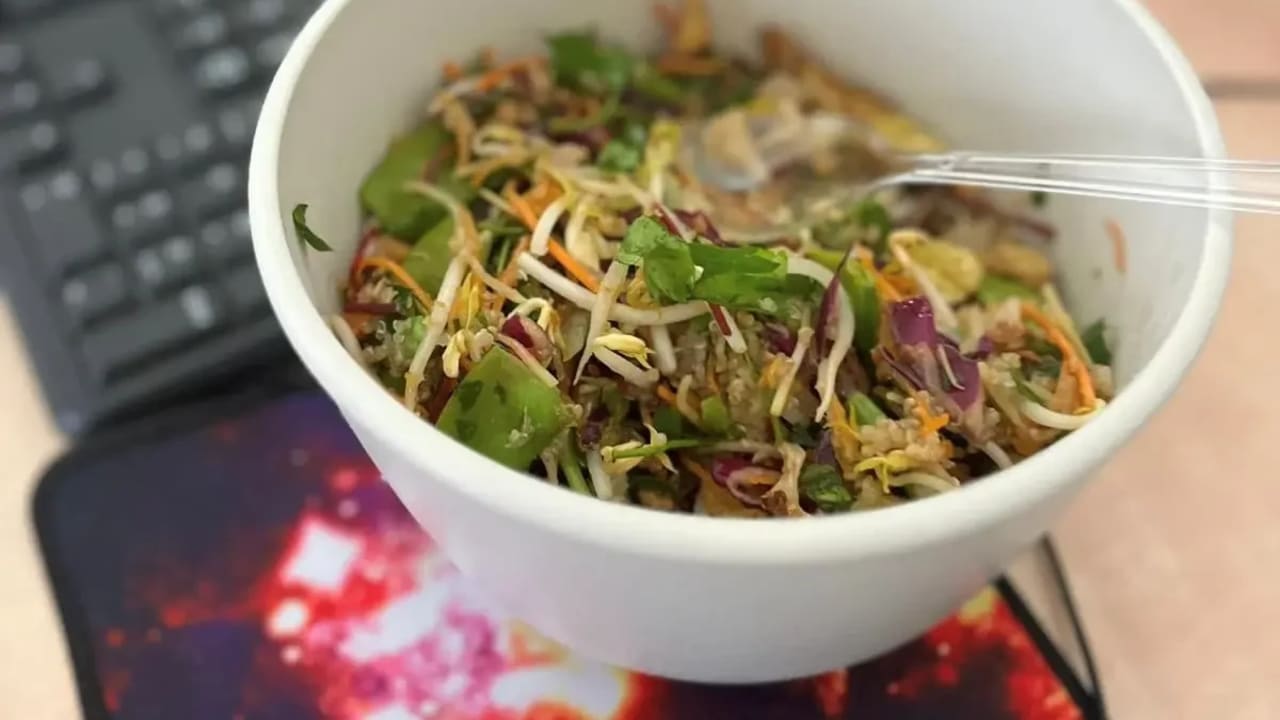ByGALIT SNIR, CLINICAL NUTRITIONIST
Whether you bring food from home or mostly order deliveries – there is a way to stay full and avoid temptation from all the snacks.
As a dietitian, one of the topics that comes up again and again in conversations with patients is dealing with food during the workday. Whether it’s choosing lunch, resisting the snacks that tempt us in the office, or coping with the stress and pressure that prevent proper meals – eating at work is a daily challenge many of us face.
Beyond its effect on weight, the way we eat at work has implications for the rest of the day: energy levels, mood, sense of satiety, and overall health. The good news? There are solutions, and they’re simple, accessible, and adaptable to any type of work.
Whether you have a Cibus card or there’s simply no cafeteria at work, ordering food from outside is a convenient but usually high-calorie solution. An average lunch dish can start at 600 calories when it comes to a rich salad but can easily reach 1,500 calories – if it’s a shawarma in laffa bread or a hummus plate with two pitas.
The solution: Combine home-cooked food with smart ordering. For example: Two days a week bring home food (usually Sunday and Monday when there are leftovers from Shabbat), two days choose a moderate meal – such as a rich salad with protein, or a cooked meal similar to a home meal, and one day for indulgence. Another strategy is to reduce portion size – for example, skip carbohydrate sides or eat half the portion and save the other half.
Cookies and pretzels in the kitchenette, chocolate a colleague brought, or something sweet with the afternoon coffee. We all know that feeling – a craving for sweets that hits us midday or during tired hours, and one snack leads to another. We didn’t plan to eat, but we added unnecessary sugars and calories almost without noticing.
The solution: Set one snack time a day and take in advance the desired amount we allocate ourselves. Another, healthier option: Bring a snack from home – sliced fruit, dried fruit, nuts, almonds, or yogurt.
Third challenge: Stress and pressure – no time to sit and eat
For employees in stressful professions such as nurses, doctors, or service providers, a proper meal break isn’t always an option, and even if it is, it’s often very short. Even in an office, a busy day can delay eating until late hours.
The solution: Food suitable for quick eating. Sandwiches are an excellent solution – for breakfast, lunch, and in between, add sliced fruits and vegetables. In the evening, you can complete with a main meal. And don’t worry, it doesn’t make you gain weight.
It’s important to choose whole-grain bread, whole-wheat pita, or whole bagel and fill them with satisfying ingredients like egg, tuna, cheese, tahini, and vegetables. Savory quiches or muffins can also fit.
Fourth challenge: No time to organize healthy food for ourselves
How many times have we eaten something just because it was available – and then regretted it? The feeling is that preparation in advance takes time and effort, so we skip it. But that’s a mistake – it actually takes very little time, even 10 minutes is enough.
The solution: Planning and organizing the night before. Keep vegetables, fruits, and proteins (chicken breast, boneless thighs, tofu, or fish) in the fridge. The night before, wash the vegetables and fruits and put them in a container. Vegetables like baby cucumbers or cherry tomatoes such as Whitney heart-shaped tomatoes don’t even require cutting. Cooked food can be leftovers from yesterday, food you made for the kids, or, if you managed to make it especially for yourself – even better.
Fifth challenge: Mobile work – no access to healthy food
Taxi and bus drivers, salespeople, or anyone spending most of the day on the road face a double challenge: Healthy food is not available, and there’s no equipment like a refrigerator or microwave.
The solution: A small cooler with food from home – at least for morning and mid-day. Sandwiches, vegetables, yogurt. Lunch – if possible, eat at home, and if not, look for a place that resembles a home-cooked meal. Sounds difficult? True. It requires planning and consistency, but it’s possible – and there are drivers who manage to maintain a balanced diet and even lose weight.





.jpg)











